Investigating molecular crowding within nuclear pores using polarization-PALM
- PMID: 28949296
- PMCID: PMC5693140
- DOI: 10.7554/eLife.28716
Investigating molecular crowding within nuclear pores using polarization-PALM
Abstract
The key component of the nuclear pore complex (NPC) controlling permeability, selectivity, and the speed of nucleocytoplasmic transport is an assembly of natively unfolded polypeptides, which contain phenylalanine-glycine (FG) binding sites for nuclear transport receptors. The architecture and dynamics of the FG-network have been refractory to characterization due to the paucity of experimental methods able to probe the mobility and density of the FG-polypeptides and embedded macromolecules within intact NPCs. Combining fluorescence polarization, super-resolution microscopy, and mathematical analyses, we examined the rotational mobility of fluorescent probes at various locations within the FG-network under different conditions. We demonstrate that polarization PALM (p-PALM) provides a rich source of information about low rotational mobilities that are inaccessible with bulk fluorescence anisotropy approaches, and anticipate that p-PALM is well-suited to explore numerous crowded cellular environments. In total, our findings indicate that the NPC's internal organization consists of multiple dynamic environments with different local properties.
Keywords: PALM; biophysics; cell biology; human; nuclear pores; polarization PALM; rotational diffusion; structural biology; super-resolution microscopy.
Conflict of interest statement
No competing interests declared.
Figures
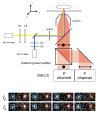

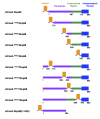

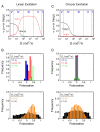

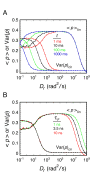


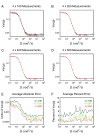
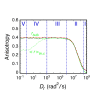
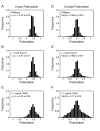

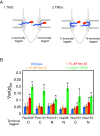

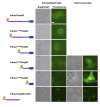

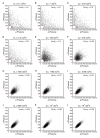

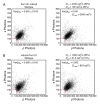
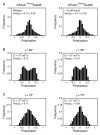
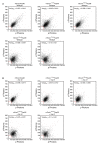
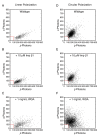
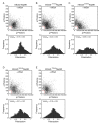
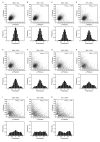
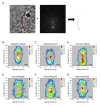




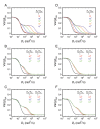

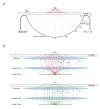




Similar articles
-
Large cargo transport by nuclear pores: implications for the spatial organization of FG-nucleoporins.EMBO J. 2013 Dec 11;32(24):3220-30. doi: 10.1038/emboj.2013.239. Epub 2013 Nov 8. EMBO J. 2013. PMID: 24213245 Free PMC article.
-
'Natively unfolded' nucleoporins in nucleocytoplasmic transport: clustered or evenly distributed?Nucleus. 2011 Jan-Feb;2(1):10-6. doi: 10.4161/nucl.2.1.13818. Nucleus. 2011. PMID: 21647294 Free PMC article.
-
The selective permeability barrier in the nuclear pore complex.Nucleus. 2016 Sep 2;7(5):430-446. doi: 10.1080/19491034.2016.1238997. Epub 2016 Sep 27. Nucleus. 2016. PMID: 27673359 Free PMC article. Review.
-
SPEED Microscopy and Its Application in Nucleocytoplasmic Transport.Methods Mol Biol. 2016;1411:503-18. doi: 10.1007/978-1-4939-3530-7_31. Methods Mol Biol. 2016. PMID: 27147062 Free PMC article.
-
Distinct, but not completely separate spatial transport routes in the nuclear pore complex.Nucleus. 2013 May-Jun;4(3):166-75. doi: 10.4161/nucl.24874. Epub 2013 May 1. Nucleus. 2013. PMID: 23669120 Free PMC article. Review.
Cited by
-
The liquid state of FG-nucleoporins mimics permeability barrier properties of nuclear pore complexes.J Cell Biol. 2020 Jan 6;219(1):e201907157. doi: 10.1083/jcb.201907157. J Cell Biol. 2020. PMID: 31723007 Free PMC article.
-
The Tat protein transport system: intriguing questions and conundrums.FEMS Microbiol Lett. 2018 Jun 1;365(12):fny123. doi: 10.1093/femsle/fny123. FEMS Microbiol Lett. 2018. PMID: 29897510 Free PMC article. Review.
-
A series of spontaneously blinking dyes for super-resolution microscopy.bioRxiv [Preprint]. 2024 Feb 24:2024.02.23.581625. doi: 10.1101/2024.02.23.581625. bioRxiv. 2024. PMID: 38766149 Free PMC article. Preprint.
-
A Programmable DNA Origami Platform for Organizing Intrinsically Disordered Nucleoporins within Nanopore Confinement.ACS Nano. 2018 Feb 27;12(2):1508-1518. doi: 10.1021/acsnano.7b08044. Epub 2018 Jan 25. ACS Nano. 2018. PMID: 29350911 Free PMC article.
-
Nuclear Delivery of Nanoparticle-Based Drug Delivery Systems by Nuclear Localization Signals.Cells. 2023 Jun 15;12(12):1637. doi: 10.3390/cells12121637. Cells. 2023. PMID: 37371107 Free PMC article. Review.
References
-
- Adam V, Moeyaert B, David CC, Mizuno H, Lelimousin M, Dedecker P, Ando R, Miyawaki A, Michiels J, Engelborghs Y, Hofkens J. Rational design of photoconvertible and biphotochromic fluorescent proteins for advanced microscopy applications. Chemistry & Biology. 2011;18:1241–1251. doi: 10.1016/j.chembiol.2011.08.007. - DOI - PubMed
Publication types
MeSH terms
Substances
Grants and funding
LinkOut - more resources
Full Text Sources
Other Literature Sources

